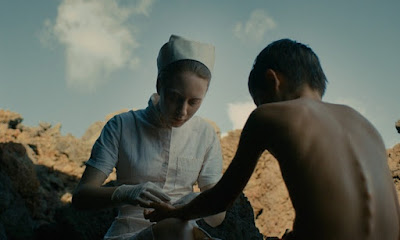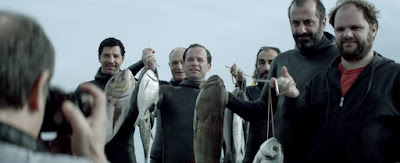Notes on Chantal Akerman's encounter with Hitchcock and Marcel Proust
Recently in a collection of articles in an Iranian film journal, dedicated to the Hitchcock’s
Vertigo, one of my colleagues had chronicled the films influenced by
Vertigo which covers many films from 1958 up to this day, directly inspired by Hitchcock’s masterpiece, or as an homage to it. Though a long and interesting list, it lacked one decisive title which in a sense is the most
vertigoic of the all vertigo childrens; A film that presents love, death, voyeurism and obsession in the most contemporary context, reverses some of the gender issues of the original film, and significantly it’s been directed by a woman. The film is
La Captive [The Captive] (2000), directed by Chantal Akerman and an adaptation of Marcel Proust’s
La Prisoniere (volume five of
In Search of Lost Time).

The story follows Simon (Stanislas Merhar), survivor of a wealthy family who lives with his grandmother (Midge?), and in love with Ariane (Sylvie Testud), while she is in love with both Simon and Andrée (a girl with whom she has a close relationship). Simon is allergic and vulnerable even to the smell of flowers. Such is Simon’s vertigo and interestingly, there are workers painting the walls, throughout the film, leaving him to cope with allergic reactions to the smell of paint. Simon wants to change Ariane and shape her, like a statue, to his own liking. He tries hard, but fails, as Ariane drowns (or get lost) at sea.


Akerman’s film has a prologue which serves as an equivalent to the roof chase scene at the beginning of the Vertigo. Simon is watching an 8mm film of a woman, whom he will be eventually following. The shots become closer to the woman and Simon is obsessed by her. This is Simon’s fall!
Then story more and less follows the pattern of Vertigo that is mostly evident in the two Hitchcockian themes of chase and gaze. Similarities are more than one can imagine: following her by car and the static medium shot of Simon, following her to the museum and the hotel, she is dressed in grey, he stands in the doorways and looks at her emotionless. In the museum there is a statue of a woman whose hair reminds us of Kim Novak’s famous bun. These alternations in Akerman’s work when become necessary, and even crucial, that the idea of possession turns into male looking at female as a museum piece, a lifeless object that could be the source of passion and inspiration. Akerman points his camera to the masculine mindsets of Simon. One of the most expressive scenes happens in the museum, when Simon is surrounded by statues of women who have missing arms, heads or legs. Simon is unable to link the real identities of the woman he loves, or he thinks he love, with his thoughts and temptations which are based upon “women as an object to worship and idolize”. There is a physical obstacle between him and women (as in the famous poster showing a glass barrier between Simon and Ariane) that makes him a mere observer.


In Akerman’s view, things could be simple, real and tangible for a woman. Woman lives and the man’s life is watching the woman live. Ariane allows Simon to mold her into the object of his desires, obeys his every whim and wish. The combination of his authority and her total compliance leads the situation to a bitter end, Akerman’s version of the tower of death. During his long drive to the beach, Simon tries to search the real core of Ariane. For the very first time we see him trying to understand her. But his efforts are shattered by her death in the sea. The closing scene shows Simon (Scottie?) on a boat, searching for her body. As in the last scene of Vertigo, everything is in grey. If Scottie overcomes his fear, Simon seems to be lost forever.


La Captive is not a masterpiece, but it has many brilliant ideas in dealing with Vertigo which are executed almost flawless. I think this is one of the best tributes to Hitchcock’s cinema. If Vertigo between psychoanalysis and poetry choose the second, La Captive stays faithful to the first, and creates a powerful dreamlike story of the oldest notion of possession in history: man owning woman! She dismantles this concept, demystifies it, and stays calm all the way. •





















